 The
Promised Land was now conquered, 600 years after God had
promised Abraham that his seed would become a nation.
God had promised blessings, stating that if the people
followed Him faithfully, they would be “the head, not
the tail” in the world, and be “at the top”
and “never at the bottom”
(Deut.
28:1-14; 30:1-10).
All that the Israelites needed to do was obey God.
However, they did not obey God. The blessings they could
have had were forfeit. The
Promised Land was now conquered, 600 years after God had
promised Abraham that his seed would become a nation.
God had promised blessings, stating that if the people
followed Him faithfully, they would be “the head, not
the tail” in the world, and be “at the top”
and “never at the bottom”
(Deut.
28:1-14; 30:1-10).
All that the Israelites needed to do was obey God.
However, they did not obey God. The blessings they could
have had were forfeit.
The recurring pattern in
the book of Judges is often referred to as the “Four
S’s.” (1, pg. 227)
1.
Sin:
The people fall into sin, as they worship false gods or
intermarry with the Canaanites.
2.
Servitude:
The people’s sin brings on a period of servitude in
which Israel becomes subject to people they once
controlled.
3.
Supplication:
After a time in servitude, Israel cries out to God in
supplication.
4.
Salvation:
After supplication God raises up a leader to bring the
people salvation.
The Book of Judges is
the main source of information for this period
(1367-1050 BC) in Palestine. Its history can be accepted
as completely accurate. A key verse, written twice
(Judg.
17:6; 21:25),
states its tragic theme: “Everyone did as he saw
fit.” This pattern of failure runs throughout the
book.
Most of the Book
of Judges is spent on six foreign oppressions:
1.
MESOPOTAMIAN
2.
MOABITE
3.
CANAANITE
4.
MIDIANITE
5.
AMMONITE
6.
PHILISTINE
None of these came from large, national powers of the
day. The large powers of the time were not engaged in an
active domination of the area.
-
Egypt’s Eighteenth Dynasty rulers, after
Amenhotep III, were all weak and not interested in
Canaanite control.
-
Both Seti I and his son, Rameses II, of the
Nineteenth Dynasty, did campaign north against the
Hittites, but only passed through the coastal areas of
Palestine. Bethshan was occupied by both of these
rulers. The valley region was under Canaanite control,
with Israel being little affected.
-
Merneptah and Rameses III of the Twentieth
Dynasty did make temporary invasions of the Palestine
regions to keep control of the coastal highway.
-
The Hittites never invaded Palestine, probably
because Egypt kept them in check.
-
The country of Mitanni of northern Mesopotamia
was in turn kept in check by the Hittites under
Shuppiluliuma (1375-1340) who was mainly responsible for
the rise of the Hittite Empire.
Israel’s enemies were people of the local area, small
like herself. Of all the local enemies, the most serious
were the Philistines, the one Israel faced last during
this time period into the early Unified Kingdom.
-
As part of the vast movement of the Sea Peoples,
the Philistines had been repelled by Pharaoh Merneptah
(1238-1228), but they came in larger numbers against
Egypt in the rule of Rameses III (1195-1164), between
his fifth and eleventh years.
-
They were kept from infiltrating Egypt but not
from occupying land that Egypt claimed along the
southern Canaanite shoreline.
o
Here, in an area previously assigned to
Judah and Dan, the Philistines established a pentapolis,
in which the five main cities were Ashkelon, Gaza,
Ashdod, Ekron, and Gath, each of which had its own
ruler.
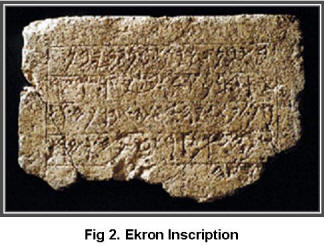 In
1993, archaeologists Seymour Gitin of the W. F. Albright
Institute of Archaeological Research and Trude Dothan of
Hebrew University of Jerusalem were excavating at Tel
Miqne in Israel.
-
They suspected that Tel Miqne was the site of one
of the main cities of the Philistine pentapolis,
specifically the biblical city of Ekron
(Josh 13:3).
-
This was confirmed when an inscription, in the
temple being excavated, the city name “Ekron” was found
(Fig. 2). It was a royal inscription carved into a slab
of limestone.
-
The Philistine city of Ekron was identified with
Tel Miqne.
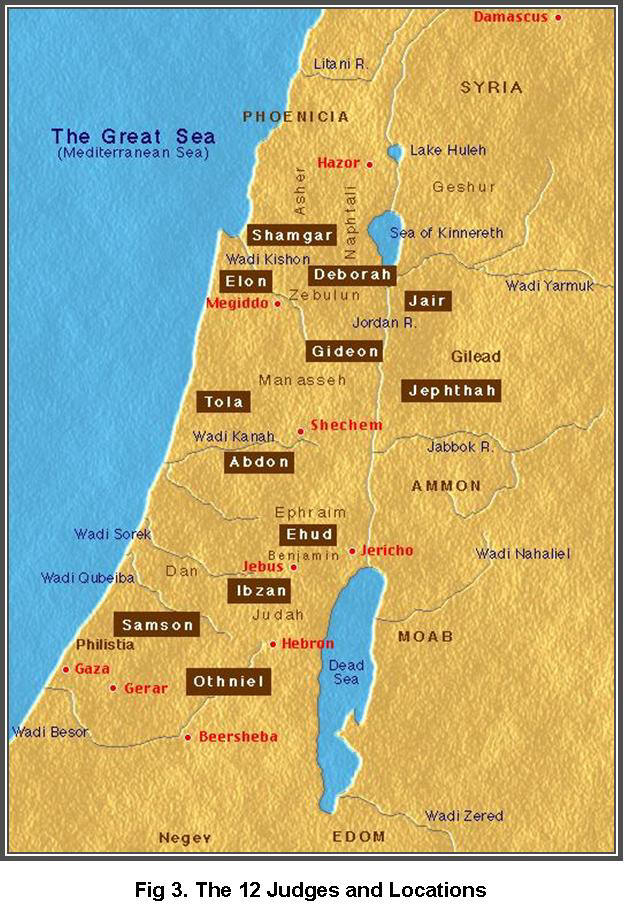 The
Book of Judges The
Book of Judges
The Book of Judges is
named from the people God selected to provide
leadership for His people.
Judges 2:16
says that God “raised up judges who saved them.”
Twelve names are normally included in the group (fig.
3). To this list sometimes are added Abimelech, Eli, and
Samuel.
-
Abimelech,
son of Gideon, was more a renegade king than a judge.
-
Eli and
Samuel, though spoken of as “judging” Israel
(1
Sam. 4:18; 7:15-17),
were more high priest
and prophet.
Chronology Problems
The number of years
indicated in the book of Judges, for the periods of
oppression and peace, including the time of Samson, adds
up to 410 years. With the Exodus placed at 1446 BC and
Solomon’s temple at 966 BC, insufficient time exists to
allow 410 years for the events outside of the Judges
time period.
-
The
chronology problem comes from
1 Kings
6:1,
which
states that 480
years elapsed between the Exodus and Solomon’s fourth
year, when he began to build the temple.
-
This
leaves only 70 years in which to locate the 40-year
wilderness period, Joshua’s time of leadership (16
years), the period between Samson’s demise and Saul’s
inauguration (no fewer than 5 years), Saul’s 40-year
reign
(Acts
13:21), David’s
40-year reign, and Solomon’s first 4 years…a total of
145 years altogether.
-
Thus, the
410 years for the events in judges is at least 75 years
too long.
The Book of Judges
itself suggests the solution; it implies that certain
periods overlapped in time.
-
For
instance,
Judges
3:30-4:1 implies
that Shamgar judged during the 80 years of peace
following Ehud’s deliverance from the Moabites.
-
Judges 10:7
implies that Jephthah, occupied with the Ammonites east
of the Jordan, and Samson, concerned with the
Philistines on the west, were contemporary in activity.
-
Certain of
the lesser judges, because they were active in separated
areas of the land, could have also worked at the same
time. For example, Tola, who judged in Issachar
(Judg.
10:1-2), and Jair,
who judged across the Jordan in Gilead
(Judg.
10:3-5).
Sufficient years may be
accounted for to solve the chronology problem.
The Oppression and Deliverance
(Judges 3:8-11)
The leader of the Mesopotamian oppression was Cushan
Rishathaim. His country is called Aram-Naharaim (fig.
4), meaning “Aram of the two rivers,” a
designation for Mesopotamia.
-
Since this is the only oppressor who came from a
distant land, and since the Mesopotamian region did not
otherwise have military contact as far south as Israel
at this time in history, considerable discussion has
ensued as to the man’s identity.
-
Some have suggested that Cushan Rishathaim may
have been the Hittite king who is known to have
conquered Mitanni and later southward as far as
Palestine, leaving traces at Bethshan and elsewhere.
The Bible does not tell how this conquest by
Cushan-Rishathaim was affected, nor how many tribes were
involved. None of the other oppressions affected all of
the tribes, and so likely this one did not either.
-
The duration of occupation is given as eight
years. Toward the close of this time the people cried to
God for relief, and He gave it through Othniel, younger
brother of Caleb.
-
No record is given of how he won the victory. It
is stated that “the Spirit of the LORD came upon him”
in achieving it. After the victory, Israel had peace
40 years.
This first oppression can be dated to the early second
quarter of the fourteenth century.
-
It could not have followed Joshua’s death
immediately, because Judges
2:7 states that the people continued faithful to
serve God during his time and that of the elders who
out lived him.
-
Since the oppression was permitted because of
unfaithfulness, there had to be time for the elders to
die and Israel’s apostasy to occur.
-
Joshua could hardly have died before 1390 BC,
which means this oppression cannot be placed much before
1375 BC, 15 years later.

Oppression and Deliverance
(Judges 3:12-30)
The second oppressing
nation was Moab. Moab lay immediately across the Dead
Sea from Judah, south of the Transjordan tribes.
-
Moab,
assisted in some part by Ammonites and Amalekites,
crossed the Jordan and occupied Jericho.
-
Eglon was
their king. Using Jericho as a center, he kept the
Israelites in servitude for 18 years.
Israel cried once more
to God for relief, and God rose up a second deliverer,
Ehud of the tribe Benjamin.
-
If the
date for Ehud is set not long after the civil war of
Benjamin and the other tribes, he may have been one of
the 600 Benjamites who escaped to the rock of Rimmon.
-
The
deliverance Ehud affected was not through warfare, but
through an act of deception in which he killed King
Eglon.
o
Ehud
extended a gift from the subjugated Israelites to King
Eglon. Alone with the king, Ehud killed him with a
sword.
o
Ehud then
assembled Israelites at the Jordan where the Moabites,
who could now be expected to retreat, would cross. The
Moabites did retreat, and Ehud’s men
killed 10,000 Moabites. This brought 80 years of peace
to the land.
Evidence
Following the destruction of
Jericho by Joshua the site lay abandoned for decades.
Then, an isolated palace was constructed. It was found
and excavated by British archaeologist John Garstang in
the 1930s. The archaeological finds in the stratum of
the palace match the period of the palace at Jericho
where Eglon, king of Moab, was assassinated by Ehud
(Judges 3:15-30).
-
The building dates to the second half of the 14th
century BC, the time of Eglon’s oppression.
-
The plan of the building is similar to other
palaces of the period and fits the description given in
the Bible.
-
The building was an isolated structure, as the
Bible implies. There is no evidence for a town at
Jericho at this time.
-
The resident was wealthy, seen by a large
quantity of imported articles and other decorated
pottery.
-
The resident was involved in administrative
activities, as evidenced by a cuneiform tablet found.
-
The building was occupied for only a short period
of time and then abandoned.
Eighty Years of Peace
(Judges 3:30)
One reason for the
80-years of peace could be the renewed activity of Egypt
during this time. The Bible places these 80-years in the
latter half of the thirteenth century.
-
The
Egyptian period would have been the Nineteenth Dynasty
of Egypt, when power was exerted by Egypt in Palestine
and southern Syria, particularly by Seti I (1316-1304)
and Rameses II.
-
Both
rulers campaigned against the Hittites, along the coast
of Palestine. These displays of power would have been
well observed by small nations of the region, who would
have refrained from undue overt activity that might
call attention to them. Consequently, local wars would
not have been waged so long as Egypt was in the area,
thus making for the period of peace.
Egypt’s goal was to
control the coastal highway leading to Syria to the
north. Cities along this highway such as Gaza, Ashdod,
and Aphek functioned as Egyptian strongholds. The
Merneptah Stele provides clues as to how far inland
Egypt extended.
The most important mention of
Israel outside of the Bible is found in the Merneptah
Stela (fig. 6). Discovered in 1896 in Merneptah’s
mortuary temple in Thebes by Flinders Petrie, the stela
is a eulogy to pharaoh Merneptah, who ruled Egypt after
Rameses the Great, c. 1236-1223 BC.
-
Of significance to Biblical studies is a short
section at the end of the poem describing a campaign to
Canaan by Merneptah in the first few years of his reign.
One line mentions Israel: “Israel is laid waste, its
seed is not.” Here we have the earliest mention of
Israel outside the Bible and the only mention of Israel
in Egyptian records.
-
Also mentioned is “Carried off is Ashkelon;
seized upon is Gezer; Yanoam is made as that which does
not exist.”
-
This puts Israel as a nation right after the
conquest of Canaan by Joshua (1406 BC).
-
The alignment of these three cities implies that
the confrontation with Israel took place in northern
Palestine. Gezer was a key access point into the Hill
country of Palestine where the tribes of Israel were
located. It could be here that Israel clashed with
Merneptah.
Karnak Temple in Thebes
Another confirmation of Merneptah’s
campaign into Israel is found on battle reliefs on a
wall of the Karnak Temple in Thebes.
-
The reliefs are found to carry the royal
cartouche of Merneptah.
-
Three of the battle scenes depict attacks on
fortified cities, and one of the cities is identified as
Ashkelon. The other two cities must be Gezer and Yanoam.
A fourth battle scene depicts the defeat of an enemy in
open terrain.
-
These scenes are the earliest depictions of
Israelites and are a perfect match with the Merneptah
Stele.
Shamgar (Judges 3:31)
It was probably during
this same 80-year span that Shamgar lived as third
judge.
-
The brief
record of his life follows directly after the record of
Ehud’s life.
-
Deborah,
the next judge, mentions Shamgar in her victory song
(Judg.
5:6) as having
preceded her.
-
He is
called “son of Anath,” which suggests that his
hometown was Bethanath, a southern city of Judah
(Josh.
15:59).
-
His
victory is described as a personal one, in which he
demonstrated enormous strength and courage, killing no
less than 600 Philistines with nothing but an ox-goad (a
stout stick, often bronze tipped, used to guide oxen at
work).
Oppression and Deliverance (Judges 4-5)
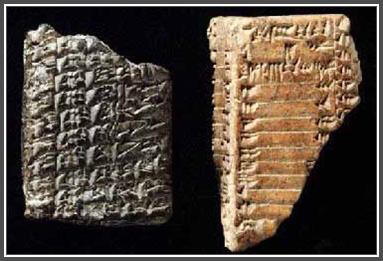 The
third oppression came from Canaanites, whom the
Israelite tribes should have driven from the land years
before. Jabin, king of Hazor, was the leader, and Sisera
was his general.
-
The city of Hazor, defeated by Joshua 170 years
before, had again become strong.
-
Sisera employed 900 chariots of iron and made
Harosheth, about eleven miles northwest of Megiddo on
the Kishon River, his center of activity. He was able to
maintain control over Israelite tribes of the area for
twenty years.
o
Harosheth is identified with Tell el-Harbaj,
a six-acre site on the south bank of the Kishon River,
at the foot of Mount Carmel.
In 1992 a cuneiform tablet fragment was found at Hazor,
addressed to a king named Jabin. The royal document
dates from the 18th century, indicating the
name of Jabin was dynastic and in long use (fig. 7).
Israel’s principal deliverer this time was a woman,
Deborah.
-
She is called a prophetess.
-
She received people under a palm tree located
between Ramah and Bethel, 60 miles south of where the
battle with Sisera takes place.
-
She called on Barak, a man of Kedesh, far to the
north in Naphtali, identified with Tell Qades, northwest
of the drained Lake Huleh, to assemble an army. He
consented, provided she would participate with him.
When she agreed he gathered an army of 10,000 men from
Zebulun and Naphtali, apparently the two tribes most
affected by the oppression.
Barak brought his army south to Mount Tabor and joined
battle with Sisera west of Megiddo
(Judg. 5:19) on the
banks of the Kishon. There was victory for Israel and 40
years of peace followed.
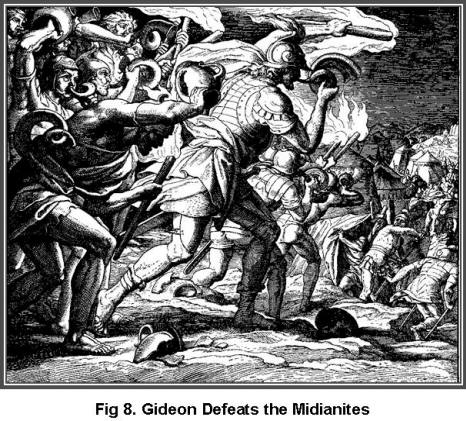 O ppression
and Deliverance (Judges 6-8)
The fourth oppression was brought by Midianites aided
by Amalekites and “other eastern peoples.” This
combined enemy came from the east to plunder the
grain-growing areas of Israel, primarily the Esdraelon
Valley and the Mediterranean coastlands as far south as
Gaza (Judg. 6:4).
-
For six years the invaders stripped these areas
of livestock and grain. The Israelites’ hide in caves.
-
When the people cried for relief this time, God
provided a deliverer, Gideon.
Gideon lived in Ophrah, a village
of Manasseh located in the Esdraelon Valley.
-
The people of Ophrah had accepted Baal worship so
completely that they had built their own Baal altar and
Asherah symbol.
-
God’s first order to Gideon was to destroy these
objects, which he did at great personal risk, showing
courage and faith (Judg.
6:25-32).
Gideon called for an Army, 32,000
responded from the tribes of Manasseh, Asher, Zebulun,
and Naphtali.
-
As Gideon saw the enemy appear, numbering
120,000 (Judg. 8:10),
he believed his 32,000 were too few to do battle.
Gideon’s request for divine reassurance, using the sign
of the fleece (Judg. 6:33-40).
-
God granted the request but then said that the
32,000 were too many, rather than too few. Gideon should
reduce the number in order that God might receive credit
from the people for the victory when it had been won.
-
Gideon obeyed, first by permitting all who were
fearful of heart to return home, and then testing to see
which men would drink from a brook in a manner showing
readiness for battle. This left him only 300 men, an
unbelievably small number to face 135,000.
The eve of the battle found the
enemy encamped in the Esdraelon Valley between Mount
Gilboa on the south and Mount Moreh on the north.
Gideon’s men were gathered near the well of Harod at the
foot of Gilboa, armed with trumpets and pitchers
containing torches.
-
Gideon divided his men into three sections,
deployed it around the edge of the enemy camp, and
attacked by night.
-
The simultaneous sounding of the three hundred
trumpets and flaring up of the three hundred torches,
taken by the Midianites as the signal for a coordinated
attack from all sides, ignited panic among the enemy
forces. They bolted and ran.
-
Gideon quickly sent word to the Ephraimites to
cut off the enemy’s escape at the Jordan. They
responded, catching the Midianites and killing two of
their leaders, Oreb and Zeeb (Judg.
7:23).
-
At this time some of the troops, who had gone
home when given the chance, returned to help in the
chase (Judg. 7:23).
Gideon pursued the enemy to their home country where he
completed the rout by killing two main leaders, Zebah
and Zalmunna.
The country had peace for forty years while Gideon
lived.
Abimelech (Judges 9)
At Gideon’s death peace
was broken by three years of treachery and bloodshed at
the hand of Abimelech, the renegade Israelite who had
himself proclaimed king.
-
He was a
son of Gideon by a concubine in Shechem
(Judg.
8:31), who
actively sought the kingship.
-
Supported
by his mother’s family in Shechem, he murdered all but
one of his 70 brothers, whom he considered potential
rivals. Only Jotham, the youngest, escaped.
-
Abimelech
was crowned by the Shechemites, who were glad to have a
king from their own number. He reigned for three years.
-
After
three years, the Shechemites had experienced enough of
his arbitrary ways and revolted, seeking leadership from
one Gaal, head of a roving band. In the resulting war,
Abimelech was able to crush Gaal’s force at Shechem,
even burning many of the people alive when they took
refuge in the temple of Baal-berith
(Judg.
9:23-49).
-
Moving on
to Thebez to crush further resistance, he was killed
when a woman dropped a millstone on his head
(Judg.
9:50-57).
Evidence
The east gate of Shechem where Gaal and Zebul watched
the forces of Abimelech approach the city
(Judges 9:34-38) has
been discovered by archaeologists in Shechem.
-
Part of the city’s fortifications throughout the
second millennium, the gate is typical for the Middle
Bronze period with three piers and two chambers.
-
This gate would have been the main gate of the
city in the days of Abimelech.
The Temple of Baal/El-Berith in Shechem, where funds
were obtained to finance Abimelech’s kingship and where
the citizens of Shechem took refuge when Abimelech
attacked the city (Judges 9:4,
46-49) has also been found.
-
Shechem is identified with Tel/Tell Balatah. This
fortified temple dates to the period of the judges and
has walls 17 feet thick.
-
Archaeologists have identified this building with
the Temple of Baal Berith (fig. 9) mentioned in
Judges 9.
Judgeships of Tola and Jair
(Judges 10:1-5)
Two minor judgeships, probably contemporaneous, followed
Gideon. The two judges served in widely separated parts
of the country and so could have been active without
interference.
-
Tola, of the tribe of Issachar, judged in Shamir,
Ephraim, for 23 years.
-
Jair judged in an unidentified city of Gilead
across the Jordan for 22 years.
Little is known of either person.
-
Tola is said to have defended Israel, though
without explanation.
-
Jair is said to have had thirty sons, riding on
thirty ass colts, living in thirty cities, which
suggests that he was an individual of unusual position
and wealth.
Oppression and Deliverance (Judges
10:6-11:33)
The Ammonite oppression
was mainly east of the Jordan.
-
God’s
deliverer was Jephthah, the son of a Gileadite named
Gilead, and a harlot
(Judg.
11:1-3).
-
Jephthah
first tried to reach a settlement with the Ammonite
king by negotiation but did not succeed. The foreign
ruler would not accept Jephthah’s argument that the
land now rightfully belonged to Israel since she had
held it for 300 years.
-
Jephthah
prepared for conflict by raising troops from Manasseh
and Gilead. Establishing his headquarters at Mizpah in
Gilead, he moved against the Ammonite army and won a
decisive victory, seizing no less than twenty cities
located between Minnith and Aroer in an area allotted to
Reuben.
-
Jephthah
continued as judge for six years.
Judgeships of Ibzan, Elon, and Abdon
(Judges 12:8-15)
Following Jephthah’s judgeship there were three minor
judges, possibly contemporaries.
-
Ibzan judged in Bethlehem for seven years and had
thirty sons and thirty daughters.
-
Elon judged in Ajalon of Zebulun to the north for
ten years.
-
Abdon judged in Ephraim, half-way between, for
eight years. Abdon’s wealth and position are indicated
by the fact that he had forty sons and thirty grandsons.
Oppression (Judges 10:7; 13:1)
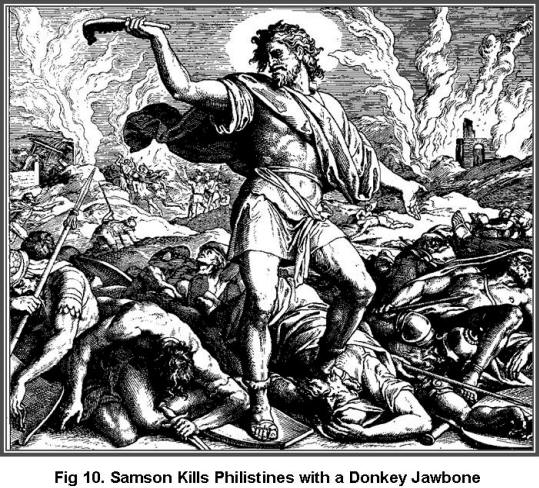 The
sixth and last oppression recorded in Judges was by the
Philistines. According to
Judges 10:7,
the time was roughly contemporary with the oppression of
the Ammonites. The Philistines were able to impose their
will on Israel for 40 years and continued to
periodically do so through the reign of Israel’s first
king, Saul. The
sixth and last oppression recorded in Judges was by the
Philistines. According to
Judges 10:7,
the time was roughly contemporary with the oppression of
the Ammonites. The Philistines were able to impose their
will on Israel for 40 years and continued to
periodically do so through the reign of Israel’s first
king, Saul.
Samson (Judges 13:2-16:31)
God’s man to counter the Philistines was Samson.
-
Samson’s father was Manoah, a Danite who had not
migrated north with other of his tribe.
-
Importance was lent to Samson’s birth by a prior
announcement through the Angel of God
(Judg. 13:3-23). The
son to be born would be a Nazirite, which means, among
other things, that his hair was not to be cut
(Num. 6:1-13).
-
Samson’s place of birth was Zorah, located at the
boundary line between Israelite and Philistine land.
Samson did not lead an
army to battle, but he did go alone among the
Philistines, working havoc by feats of enormous
strength. This strength
was of special enablement by the Spirit of God, his
dedication to God being symbolized particularly in
Samson’s uncut hair. Through this strength he was able
to kill many of the enemy.
Samson’s Feats of
Strength
(Judges
14-15)
1.
Samson’s first demonstration of strength came in
connection with his marriage to a Philistine girl of
Timnah. On the way to visit her Samson encountered a
lion and killed it with his bare hands.
2.
The second demonstration occurred within a year.
Samson returned to claim his bride, but he was told that
she had been given to another. In retaliation, he caught
300 foxes, tied firebrands to pairs of them joined by
their tails, and released them to burn Philistine
crops. The Philistines reacted by burning Samson’s
one-time bride and her father to death. Samson avenged
their death by slaughtering many of the enemy. Then he
moved back to Israelite territory, where 3,000 of his
own people, afraid of Philistine retaliation, came to
capture him. His countrymen promised not to hurt him
themselves, so Samson permitted himself to be bound and
delivered to the Philistines in Lehi. Once among the
Philistines he burst his ropes and killed 1,000 of the
enemy with the use of a “fresh jawbone of a donkey.”
3.
After these experiences Samson served as judge in
Israel for twenty years (Judg.
15:20). These years may have been spent in Hebron
(Judg. 16:3), and would
be contemporary with Samuel’s judgeship prior to the
battle of Mizpah (1 Sam.
7:3-11).
4.
Samson again visited Philistine territory,
stopping at Gaza, where he fell victim to lust and
sinned with a harlot (Judg.
16:1-3). Rising at midnight, and finding the city
surrounded by waiting Philistines, he inflicted marked
humiliation on Gaza by breaking away defensive gates and
carrying them to a nearby hill on his return to Hebron.
Not long after, Samson once more submitted to lust,
becoming infatuated with a woman of the Philistines
named Delilah, who lived in the Sorek Valley not far
from his place of birth, Zorah. Given promise of massive
reward by the Philistine leaders, Delilah sought to
entice Samson to reveal the secret of his strength. He
gave her false answers three times but finally told her
the truth regarding his uncut hair. She cut it off while
he slept, and the Philistines were able to put out his
eyes and make him labor sightless in their prison in
Gaza. When his hair had grown again, Samson had his last
revenge. Taken to entertain assembled Philistines in
the temple of Dagon, he called upon God for a return of
his strength, and he was enabled to dislodge two
central supporting columns of the temple from their
bases, destroying the building and killing more of the
enemy at the time of his own death than in all his prior
years.
Evidence
In one fell swoop, Samson eliminated the entire
Philistine leadership. This was a major setback in their
conflict with Israel. It was a turning point. From this
time on, the Israelites started to gain the upper hand.
But did it really happen? Could one man pull down an
entire temple? Archaeology has discovered some
interesting facts.
-
Archaeologists have uncovered two
Philistine temples. One at Tel Qasile, in northern Tel
Aviv, and one in Tel Miqne, ancient Ekron, 21 miles
south of Tel Aviv.
-
Both temples share a unique design; two
central pillars supported the roof. The pillars were
made of wood and rested on stone support bases. With the
pillars being about six feet apart, a strong man could
dislodge them from their stone bases and bring the
entire structure down.
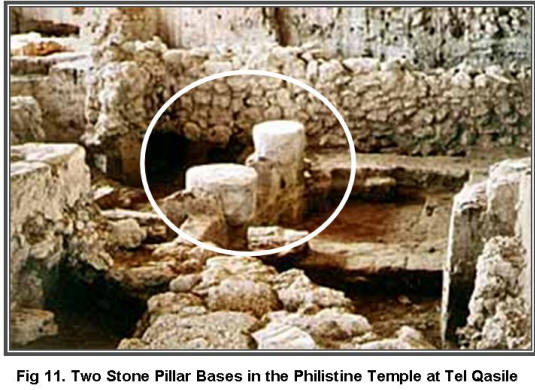
The archaeological findings match the Biblical story
perfectly and attest to the plausibility of the account.
| 
 The
Promised Land was now conquered, 600 years after God had
promised Abraham that his seed would become a nation.
God had promised blessings, stating that if the people
followed Him faithfully, they would be “the head, not
the tail” in the world, and be “at the top”
and “never at the bottom”
The
Promised Land was now conquered, 600 years after God had
promised Abraham that his seed would become a nation.
God had promised blessings, stating that if the people
followed Him faithfully, they would be “the head, not
the tail” in the world, and be “at the top”
and “never at the bottom” 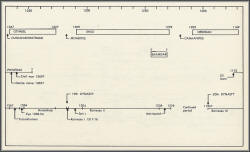
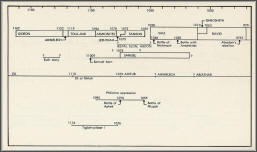
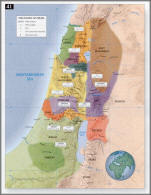
 In
1993, archaeologists Seymour Gitin of the W. F. Albright
Institute of Archaeological Research and Trude Dothan of
Hebrew University of Jerusalem were excavating at Tel
Miqne in Israel.
In
1993, archaeologists Seymour Gitin of the W. F. Albright
Institute of Archaeological Research and Trude Dothan of
Hebrew University of Jerusalem were excavating at Tel
Miqne in Israel. The
Book of Judges
The
Book of Judges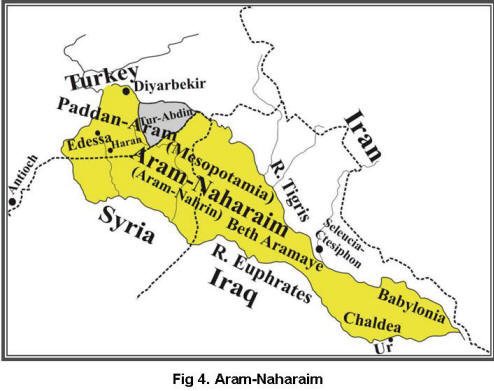

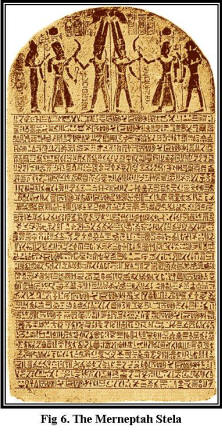 Merneptah
Stela
Merneptah
Stela The
third oppression came from Canaanites, whom the
Israelite tribes should have driven from the land years
before. Jabin, king of Hazor, was the leader, and Sisera
was his general.
The
third oppression came from Canaanites, whom the
Israelite tribes should have driven from the land years
before. Jabin, king of Hazor, was the leader, and Sisera
was his general. Oppression
and Deliverance
Oppression
and Deliverance 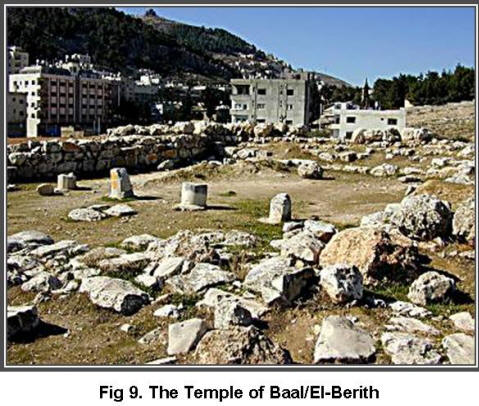
 The
sixth and last oppression recorded in Judges was by the
Philistines. According to
The
sixth and last oppression recorded in Judges was by the
Philistines. According to 
No comments:
Post a Comment